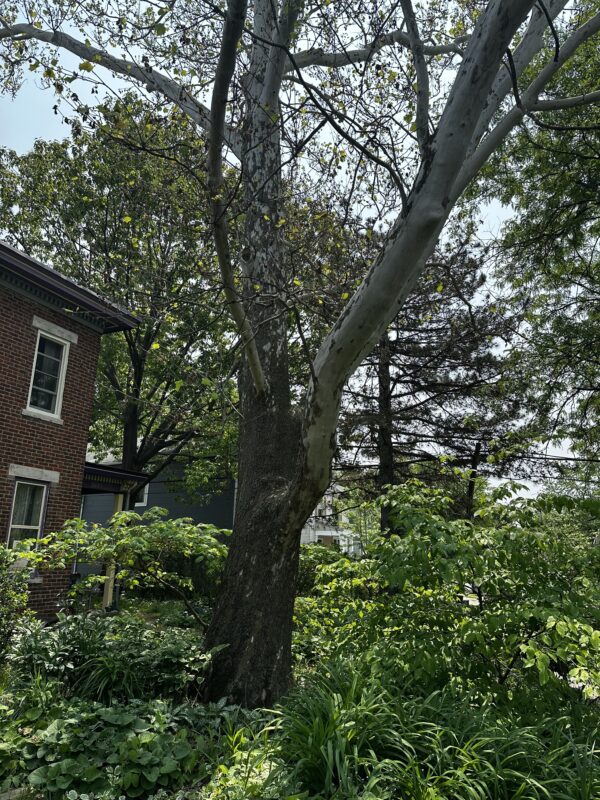Trees are everywhere, yet so many of us suffer from a concept called tree blindness. In his article for the New York Times titled, “Cure Yourself of Tree Blindness”, Gabriel Popkins assures his readers that there is a simple cure: learning about the trees around you. The ability to identify trees isn’t just a parlor trick — it can tell you more about the history of your area and even provide food!
Here are some trees I’ve seen while trying to cure myself of tree blindness:
Norway Maple – Acer saccharum
Maple trees have opposite leaves that have are simple and lobed. The Norway maple in particular has moderately lobed leaves. Differentiating between the sugar maple and the Norway maple can sometimes be tricky. I believe this is a Norway maple due to its long leaf stalk and the leaf shape.
I found this specimen in Glen Echo Park in Columbus, Ohio. Glen Echo Park is a forest habitat. Norway maples are not native to this area, but are still relatively abundant. One interesting fact about the Norway maple is that it grows roots that are so shallow and foliage that produces so much shade that grasses and other plants have trouble growing below them.
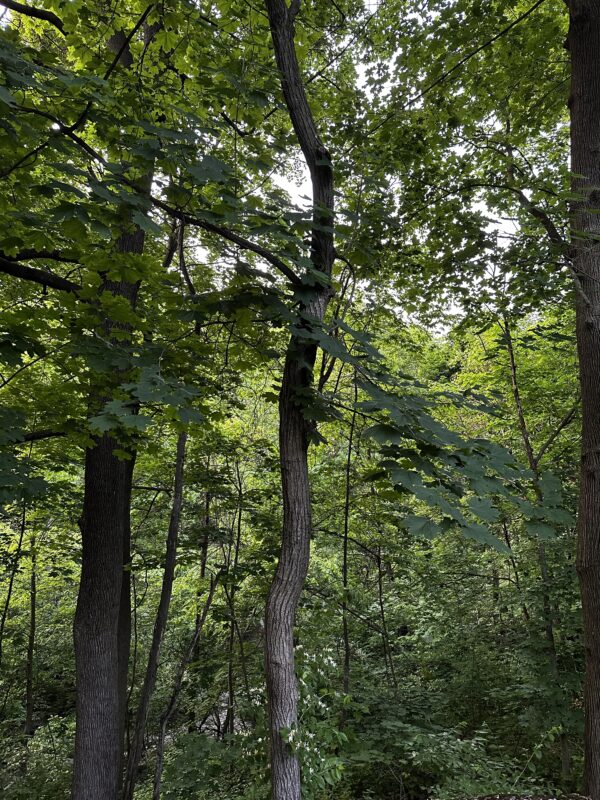
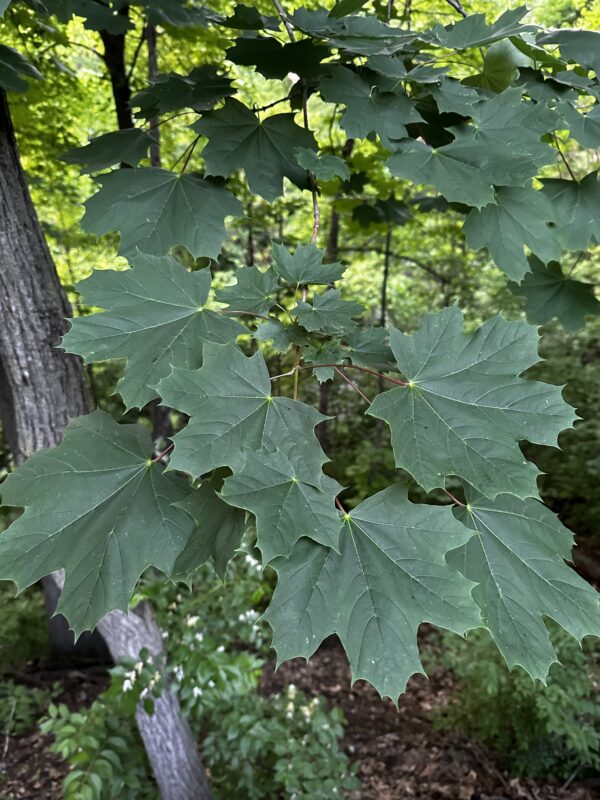
American Elm – Ulmus Americana
Elm trees have leaves that are alternate and simple, with toothed edges. Another sign that this is an elm is that the leaves are slightly asymmetrical.
I found this specimen in Glen Echo Park in Columbus, Ohio. Glen Echo Park is a forest habitat. One interesting fact about elms is that, before the spread of Dutch Elm Disease, some individuals could live to be over 200 years old. Unfortunately, most individuals don’t live longer than 30 years now.
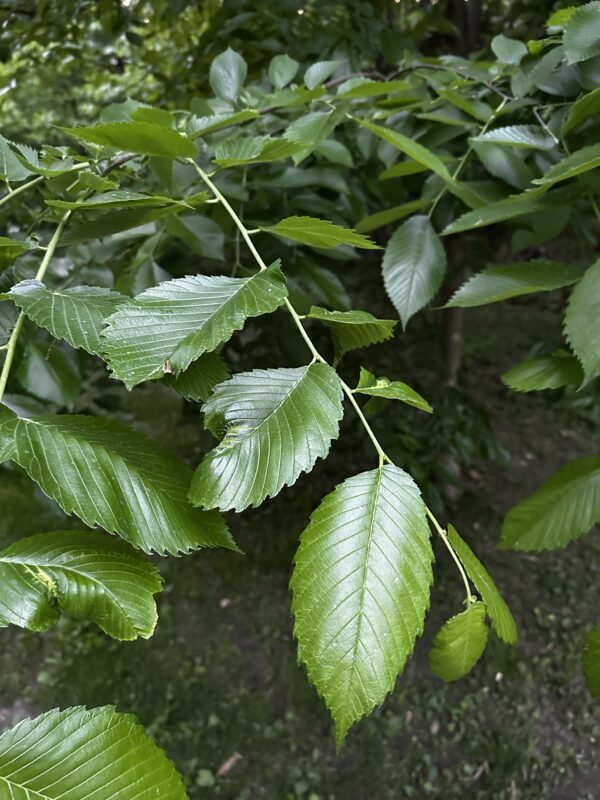
Redbud – Cercis canadensis
Redbud trees have leaves that are alternate and simple, with entire edges and a recognizable heart shape.
I found this specimen in Glen Echo Park in Columbus, Ohio. Glen Echo Park is a forest habitat. One interesting fact about redbud trees is that their flowers resemble pea pods due to their relation to the legume family.
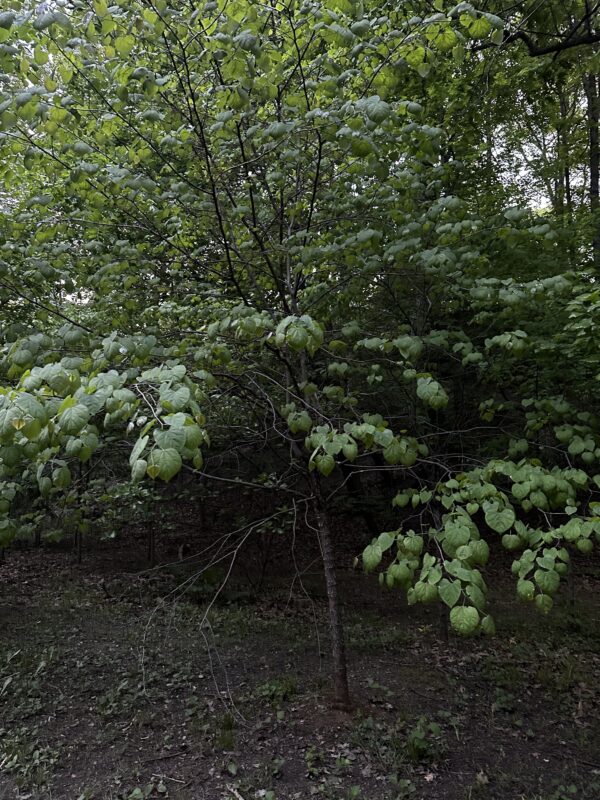
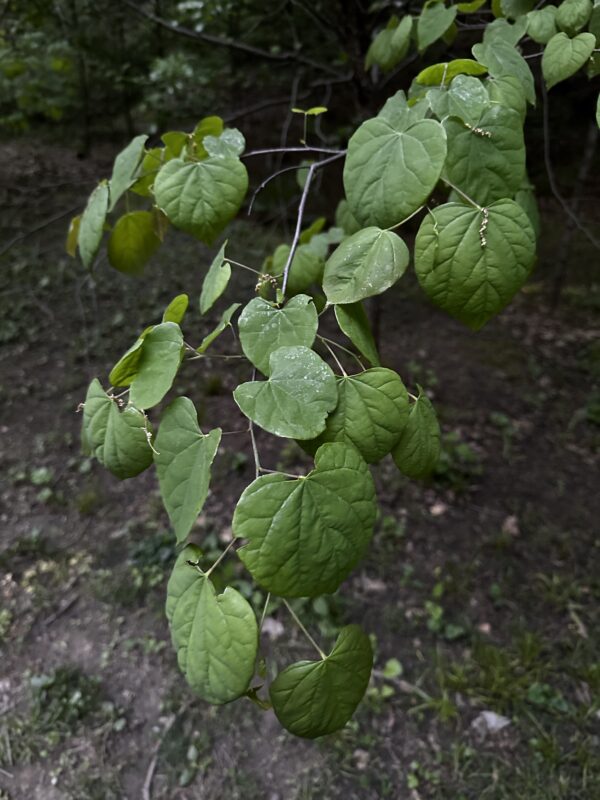 Honey Locust – Gleditsia triacanthos
Honey Locust – Gleditsia triacanthos
Honey locust trees have leaves that are alternate and pinnately compound (sometimes even twice-compound). The leaves have entire edges.
I found this specimen in Glen Echo Park in Columbus, Ohio. Glen Echo Park is a forest habitat. One interesting fact about the honey locust is that it is used a food source by many creatures, including white-tailed deer, squirrels, and raccoons.
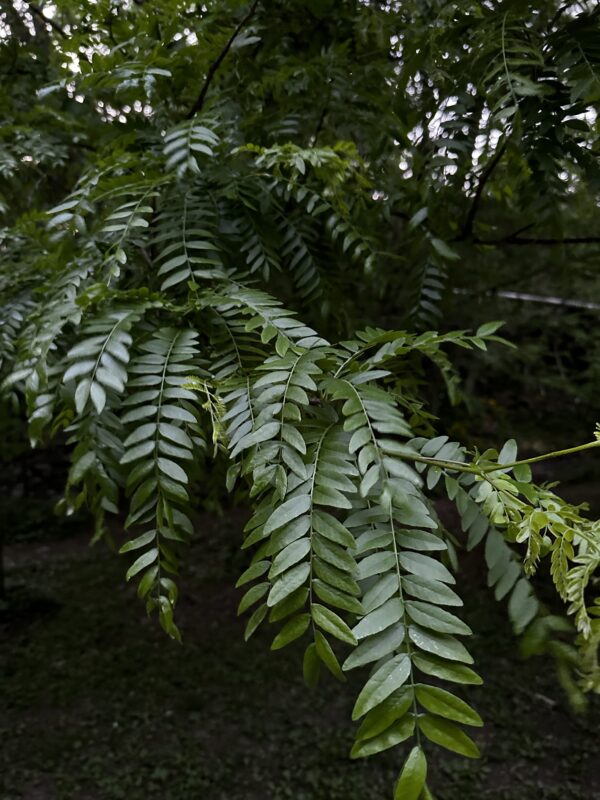
White Mulberry – Morus alba
Mulberry trees have leaves that are alternate and simple, and can be unlobed or lobed. White mulberry tends to have bright green leaves. One particular aspect of this specimen that helped me identify it was its aggregate fruits that are just beginning to grow.
I found this specimen in Glen Echo Park in Columbus, Ohio. Glen Echo Park is a forest habitat. One interesting fact about the white mulberry is that it is the favorite food of the silkworm caterpillar.
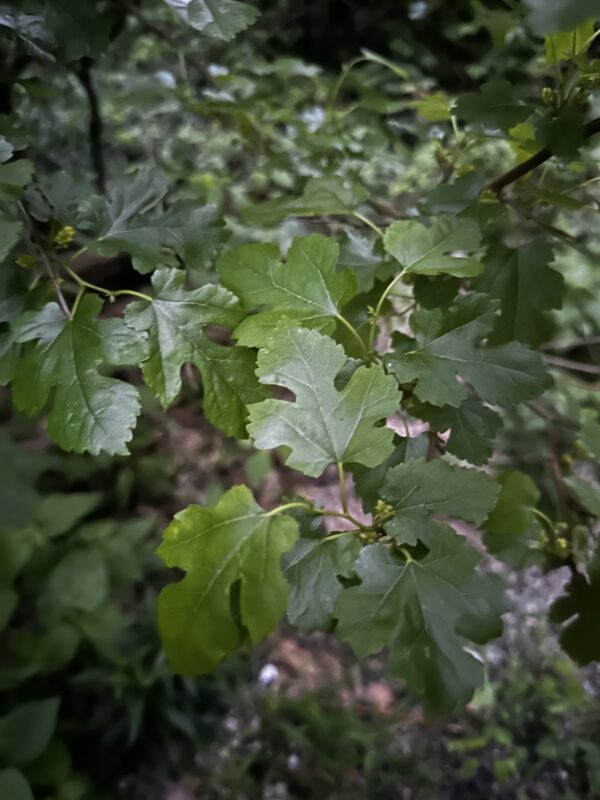
White Oak – Quercus alba
White oak trees have leaves that are alternate and simple, with lobed edges. White oak trees do not have bristle tips, which helped me identify this specimen.
I found this specimen in Battelle Darby Creek Metro Park in Columbus, Ohio. Battelle Darby Creek Metro Park is a forest habitat. One interesting fact about white oaks is that they can live to be over 500 years old.
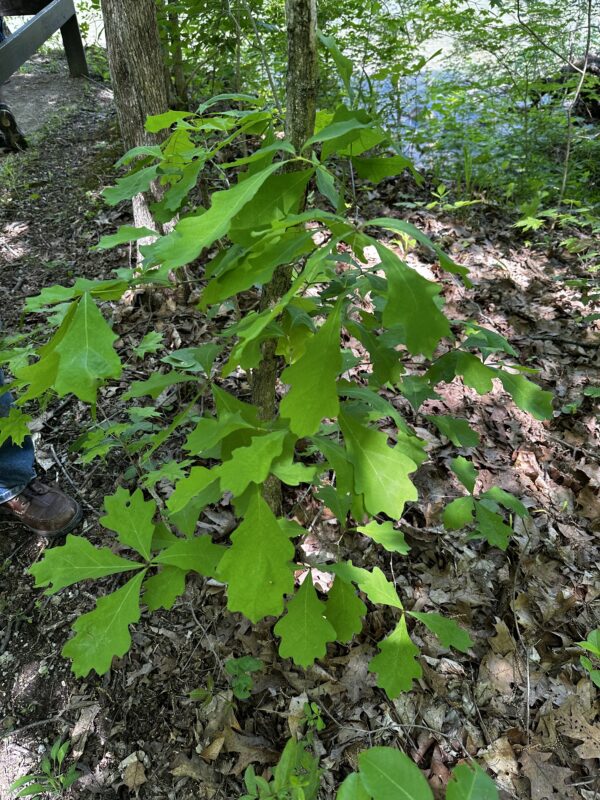
Blue Ash – Fraxinus quadrangulata
Ash trees have leaves that are opposite and pinnately compound, and the leaflets have toothed edges. Blue ash trees in particular have 7-11 leaflets, and a distinctive square stem.
I found this specimen in Battelle Darby Creek Metro Park in Columbus, Ohio. Battelle Darby Creek Metro Park is a forest habitat. One interesting fact about blue ashes is that their distribution in Ohio is limited to the western half, since they prefer limey substrates. 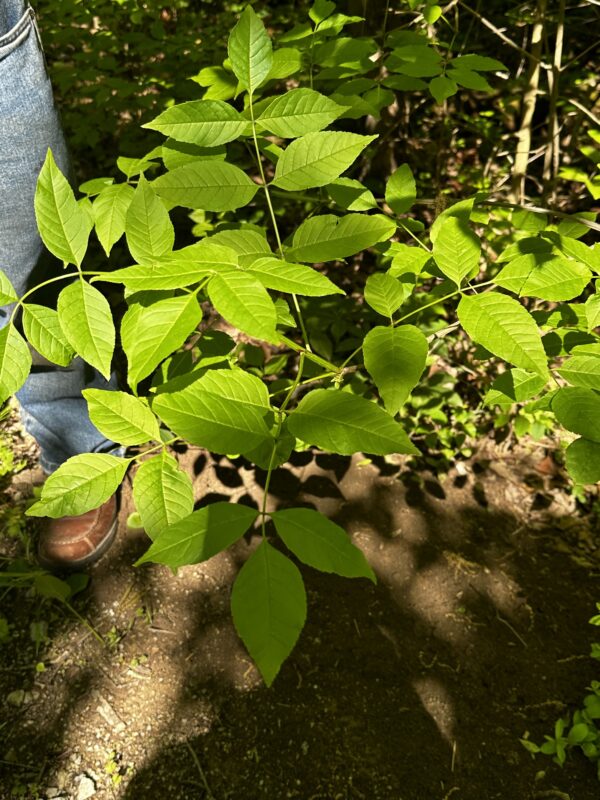
American Sycamore – Platanus occidentalis
The American Sycamore has leaves that are alternate and simple, with three to five lobes. This tree lives in my neighbors yard and unfortunately isn’t the healthiest, but I was able to identify this tree from its distinctive white limbs and spherical fruits.
I found this specimen in Old North Columbus, Ohio. This was likely a forest habitat when the tree was planted. One interesting fact about sycamores is that their trunks are often completely hollow on the inside.
